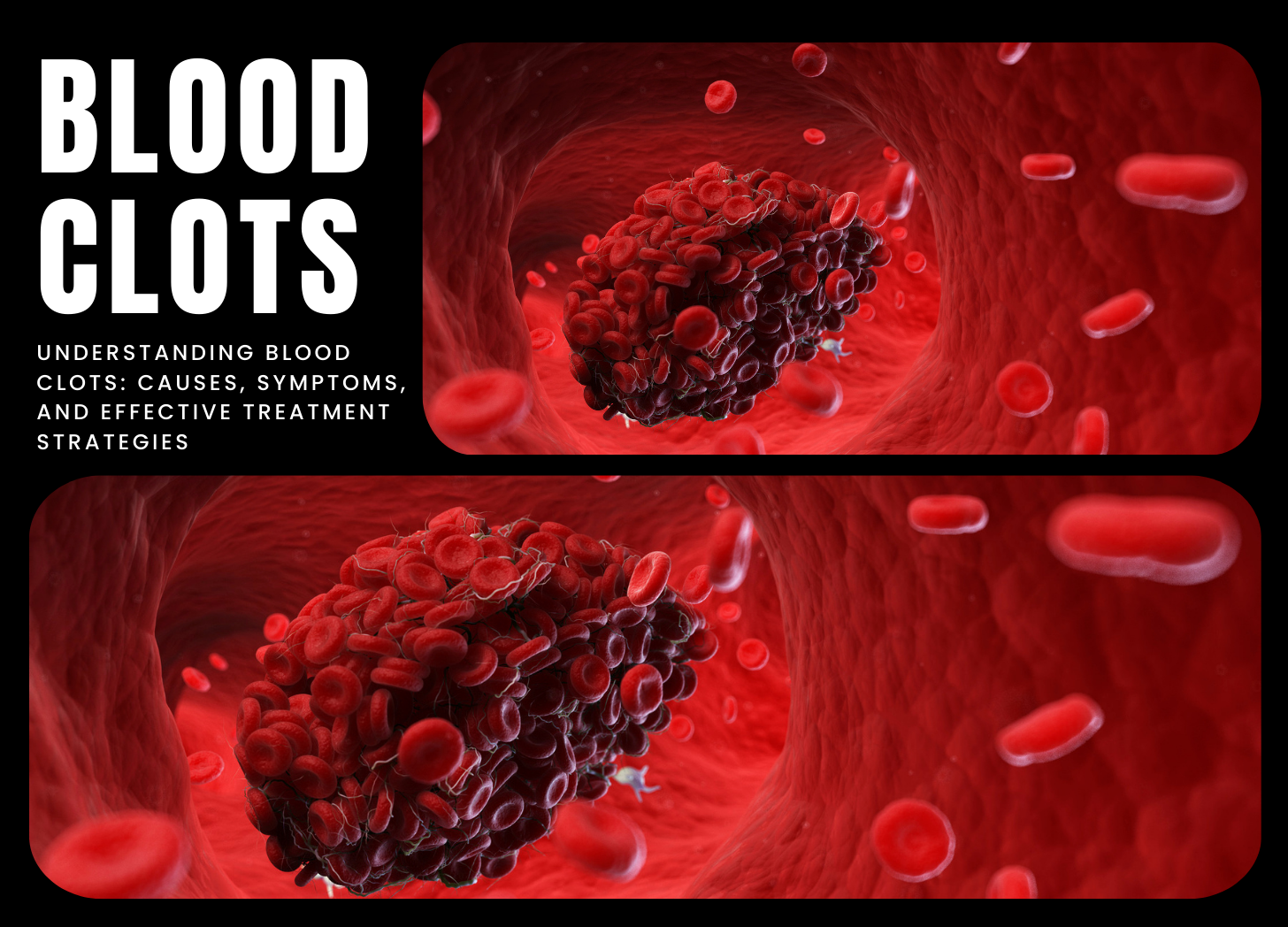Contact Us
Contact Us

Blood clots, medically known as thrombi, are gel-like clumps of blood that form when platelets and fibrin proteins coagulate to prevent bleeding at the site of a blood vessel injury. While clotting is a normal process essential for wound healing and controlling bleeding, abnormal clot formation within blood vessels can lead to significant health complications. Blood clots can occur in both arteries and veins and are influenced by various underlying conditions, lifestyle factors, or medical procedures.
There are two primary types of blood clots: arterial and venous. Arterial clots typically form in arteries carrying oxygen-rich blood to organs and tissues. They are commonly associated with conditions like atherosclerosis (artery narrowing and hardening), atrial fibrillation (irregular heart rhythm), or arterial damage, and can result in serious complications such as heart attacks, strokes, and peripheral artery disease (PAD). Venous clots, on the other hand, develop in veins and are often linked to factors like reduced blood flow (venous stasis), vascular damage, or conditions causing excessive clotting. Venous clots may lead to disorders like deep vein thrombosis (DVT) or pulmonary embolism (PE), where a clot detaches and travels to the lungs.
Symptoms of blood clots vary based on their location, size, and severity. Arterial clot symptoms may include chest pain, shortness of breath, sudden weakness or numbness in the face, arms, or legs, slurred speech, or difficulty understanding speech (indicating a stroke). Venous clot symptoms often manifest as pain, swelling, warmth, or redness in the affected limb (commonly the leg in DVT), and symptoms like sudden chest pain, rapid heartbeat, coughing up blood, or difficulty breathing (suggestive of PE).
Diagnosis of blood clots typically involves a combination of medical history review, physical examination, and diagnostic tests such as ultrasound imaging, computed tomography (CT) angiography, magnetic resonance imaging (MRI), or blood tests to assess clotting factors and markers of clot formation. Early detection and prompt treatment of blood clots are crucial to prevent complications and reduce the risk of life-threatening events such as heart attacks, strokes, or pulmonary embolisms.
Treatment of blood clots depends on the type, location, and severity of the clot. Common approaches include anticoagulant medications such as heparin, warfarin, or direct oral anticoagulants (DOACs) to prevent further clot formation and reduce the risk of clot progression or recurrence. Thrombolytic therapy may be employed in severe cases to rapidly dissolve clots. In certain instances, surgical procedures like thrombectomy (surgical clot removal) or placement of a vena cava filter may be necessary for effective clot management.
In addition to medical interventions, lifestyle modifications such as maintaining a healthy weight, regular physical activity, avoiding prolonged immobility (especially during long flights or extended bed rest), and cessation of smoking can help minimize the risk of blood clots. Individuals with underlying medical conditions or risk factors for clotting may benefit from preventive measures like compression stockings or ongoing anticoagulant therapy to reduce the likelihood of clot formation.
In summary, blood clots are gel-like masses that can form within blood vessels and pose significant health risks if left untreated. Understanding the causes, recognizing symptoms, and promptly seeking medical attention for blood clots are essential for preventing complications and mitigating the risk of serious cardiovascular events like heart attacks, strokes, or pulmonary embolisms. Empowering individuals with knowledge about blood clot prevention and treatment options enables proactive measures to maintain vascular health and reduce clot-related complications.
References:
Post a Comment